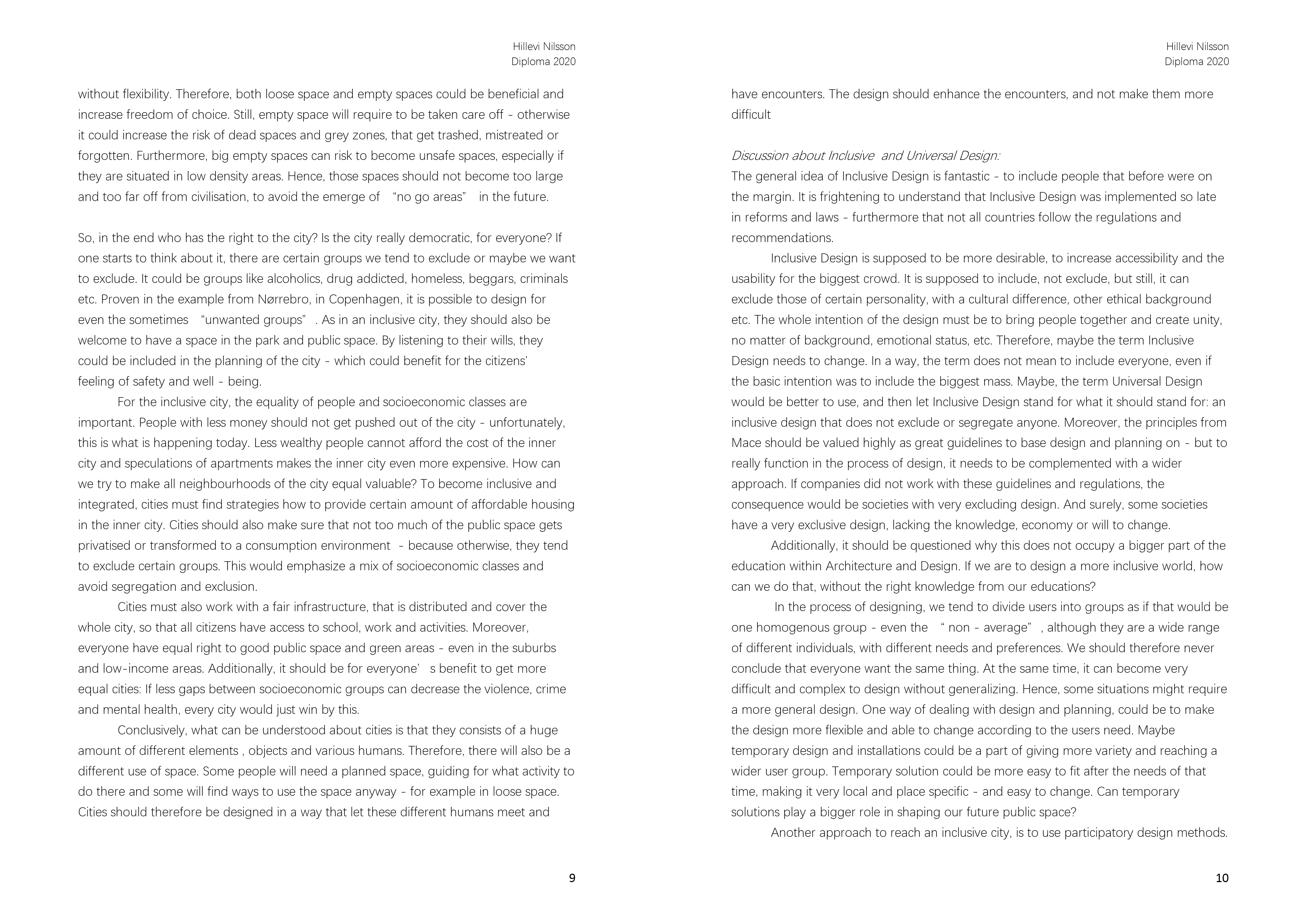Social Anthropology
The course aims to provide a basic introduction to the knowledge fields within anthropology and theoretical and methodological approaches to variations within culture and society. Socio-cultural aspects of space and place are stressed in particular. The overarching aim is to encourage a critical and reflexive attitude toward the art and craftsmanship of architecture and its consequences for and its embeddedness within culture and society.
The course aims to provide a basic introduction to the knowledge fields within anthropology and theoretical and methodological approaches to variations within culture and society. Socio-cultural aspects of space and place are stressed in particular. The overarching aim is to encourage a critical and reflexive attitude toward the art and craftsmanship of architecture and its consequences for and its embeddedness within culture and society.
Tutors: Frode F. Jacobsen
Tord Bakke
Tord Bakke
Inclusive City
To create inclusive cities, we should strive for equality among income and socioeconomic class. We should make sure that spaces and built form are designed to give something to everybody (independent of physical capacity, class, ethnicity, age, gender, etc.). That diverse groups of people feel the equal right to the use of space.
We are with billions of people on our planet and must have just as many different opinions and preferences - so to please everyone’s needs would be impossible. Hence, some spaces could benefit from being designed for more specific user groups. We should also make sure that we design cities that leave possibilities for changes in the future.
The public space is essential in the city - therefore, we should require that it has good quality. It should not matter where in the city people live - everyone should have equal access to a good and valuable space.
Finally, we must ensure that people’s right to freedom also includes people’s right to free use of public space (as long as it is not harmful and transgress laws) since loose space can play a vital role in people’s will to be a part of the city.
The public space should not force people to identify themselves with everyone, but make people accept that other humans use the same space. Therefore, we should create respect for each other’s diversity and recognise that we share the same city. Cities of the future are dependent on that we work towards more equal societies.
Social Anthropology, Hillevi Nilsson







New design paradigms
The use of Universal Design intertwined with new concepts such as friendly city, and the smart city can improve the participation and the quality of life of people, regardless of their age, size, ability or disability.
These paradigms, intent, from starting points and different measures, to contribute to the achievement of structures and services that support productivity and well-being. We should bring and add these concepts as well as the actions they entail and take advantage of their synergies to promote and improve accessibility and common quality of life in cities.
Social values and recreational opportunities naturally emerge when accessibility is reinforced. It creates the preconditions for strengthening all forms of social activities in the city space as well as contact between people.
Universal Design, Friendly city and Smart city, are promising concepts, that consider how cities need to be transformed for the future.
Cities must provide structures and services that support the well-being and productivity of their residents. That requires supportive environments that facilitate compensation for personal (physical, cognitive...) and social changes, associated with the different conditions and stages of life.
Architects are not the only ones who must have those responsibilities. It must be seen as an interdisciplinary approach.
Social Anthropology, Gustavo M. Majewski






